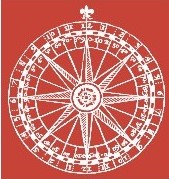Why Did the Monkey Kill the Giant? Another Look at Margutte’s Death
In the Morgante through Margutte’s death-by-laughter Pulci voices a caustic critique of Ficino’s philosophical theories while obliquely denouncing Lorenzo de Medici’s acceptance of them. The spectacle of the monkey wearing and…
Listed in Article | publication by group Iter Community
Version 1.0 - published on 10 Sep 2025
Licensed under Creative Commons BY-NC 4.0
Description
In the Morgante through Margutte’s death-by-laughter Pulci voices a caustic critique of Ficino’s philosophical theories while obliquely denouncing Lorenzo de Medici’s acceptance of them. The spectacle of the monkey wearing and taking off Margutte’s boots follows Aristotle’s definition of the ridiculous that ignites hilarity. It also retrieves Bergson’s idea of a society that can be derided because of its attempts to disguise its true self. Most importantly, it reintroduces Petrarch’s concepts of similitudo and identitas. Through the depiction of the giant’s death Pulci reveals the dignity of a poet remaining true to his poetic discourse even while coming to terms with the negative turn his career has taken.
Cite this work
Researchers should cite this work as follows:
Tags
Notes
Original publication: Palma, Pina. "Why Did the Monkey Kill the Giant? Another Look at Margutte’s Death." Quaderni d'italianistica 31 (2): 2011. 35-50. DOI: 10.33137/q.i..v31i2.14987. This material has been re-published in an unmodified form on the Canadian HSS Commons with the permission of Iter Canada / Quaderni d'italianistica. Copyright © the author(s). Their work is distributed by Quaderni d'italianistica under a Creative Commons Attribution-NonCommercial 4.0 International License. For details, see https://creativecommons.org/licenses/.
Publication preview
Iter Community
This publication belongs to the Iter Community group.
When watching a publication, you will be notified when a new version is released.
